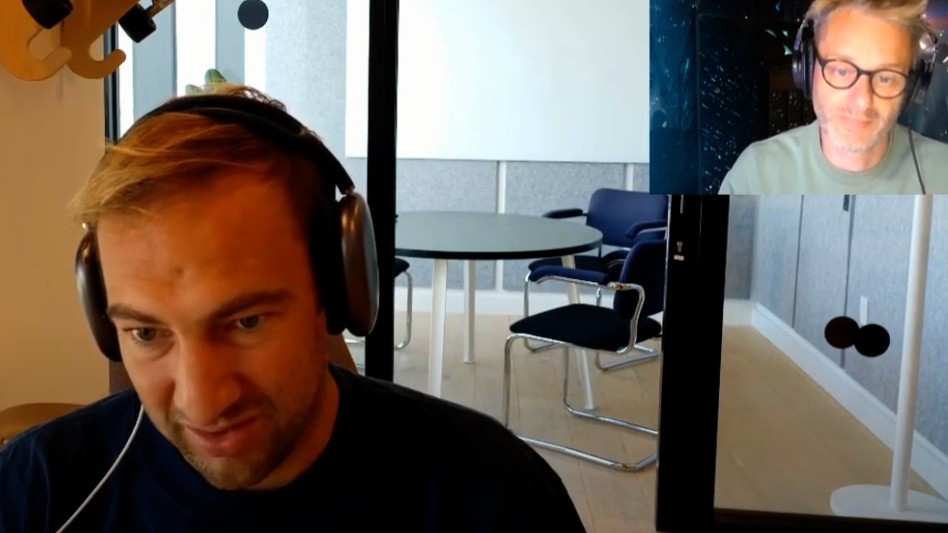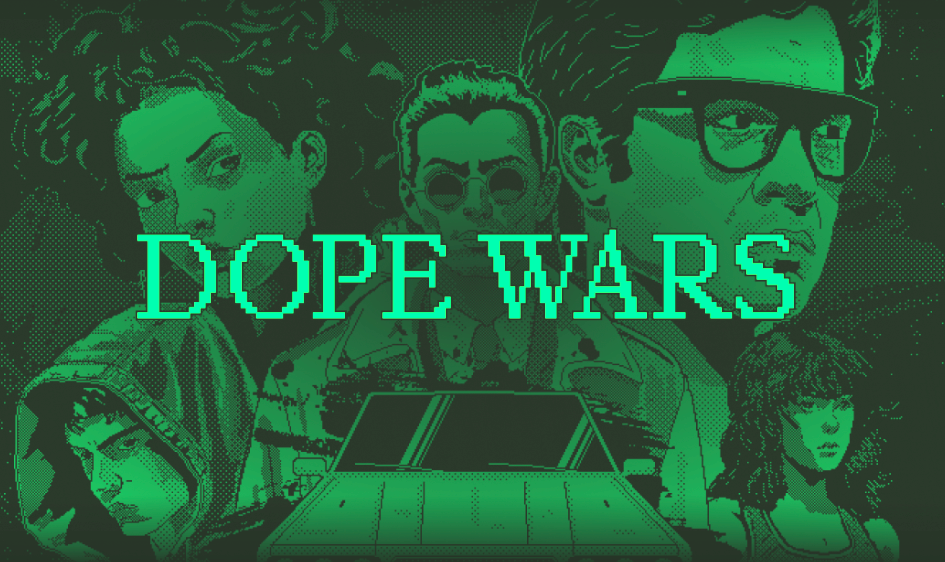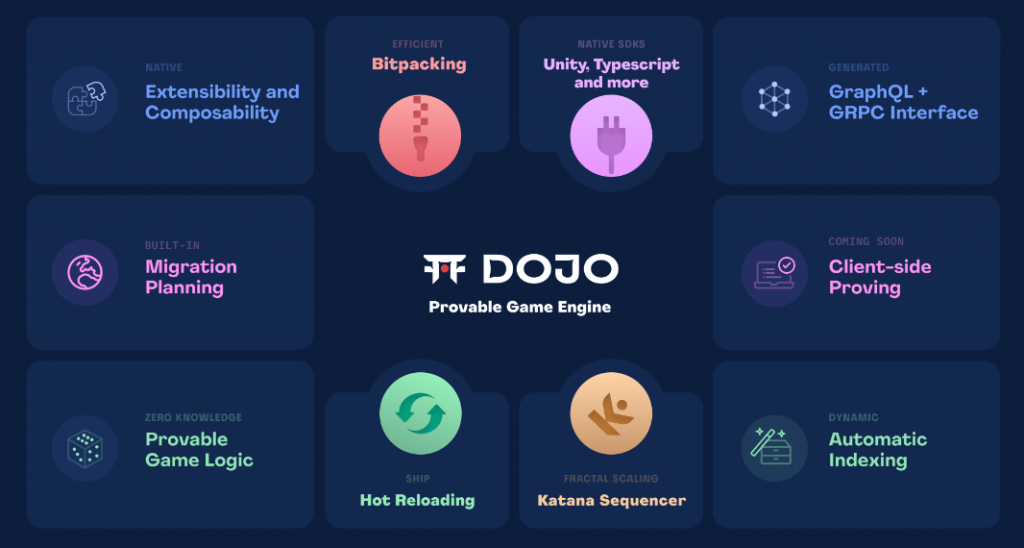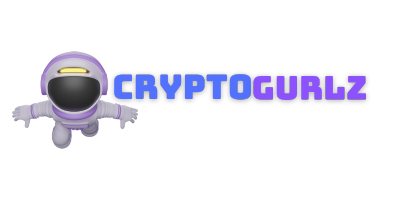Cryptocurrency Prices by Coinlib

Building fully onchain games with Cartridge’s Starknet-based dev tools
In the latest episode of the Blockchain Gaming World podcast, editor-in-chief Jon Jordan talks to Tarrence Von As, the CEO of fully onchain game tech company Cartridge.
On the heels of announcing a $7.5 million series A funding round at the beginning of August 2024, Cartridge is leveraging Starknet to build its Dojo game engine and other tech in order to help developers deploy their games fully onchain and accelerate the industry.
It’s also completing a two-month residency for 15 dev studios using its Dojo tools in New York that will demonstrate the fruits of their labor on 25th September.
BlockchainGamer: Can you give us a bit of history about how you’ve ended up the CEO of a fully onchain game tech company?
Tarrence von As: To take you back to the beginning, I got into software development and game development at a very young age when I was playing around with computers. I continued pursuing that throughout my career. I studied computer science engineering at the University of Michigan and got introduced to Bitcoin in 2013.
I’ve been involved in the industry in various capacities ever since. I purchased my first Bitcoin in 2013, and built some Bitcoin wallet stuff very early on. I got involved in the Ethereum ecosystem in 2015 and built a bunch of smart contract stuff.
In parallel to that I had a more traditional software engineering career and did some game development at university. I then joined software-as-a-service company Box out of college and then Magic Leap and worked there on mixed reality, pushing these types of interactive experiences. I did deep learning research on 3D world reconstruction from egocentric cameras.
About three years ago, those worlds all collided when a couple friends and I worked on releasing the Dope Wars ecosystem, which was an NFT. It was released very shortly after the Loot NFT, actually the next day. The focus was more on street culture, and it was heavily inspired by this classic game called Drug Wars, which was an early MS-DOS game and has existed on different platforms since then.
A lot of people have a shared experience of playing it on TI-83 calculator, and the game itself is very well suited for the blockchain. It’s basically an arbitrage game. You go between different locations. You buy low, sell high – like a gamified version of a lot of the different things we see onchain already. So we set out to build a fully onchain version of this game, simple enough to be on the blockchain.
It fits well into the existing audience of types of applications that people are interested in playing on the blockchain, but complex enough that it didn’t fit neatly on an L1 like Ethereum at the time. So someone came to the ecosystem and shared Starknet and this interesting technology with zero-knowledge proofs, and their ability to scale the amount of computation possible onchain that would make it practically possible for us to do a game fully onchain.
That was our entry point into Cartridge, this realization that there were technologies coming down the pipeline that fundamentally changed this dynamic and increased the amount of computation and expanded the design space of what was possible onchain.

But there was a lot to do to be able to put it in the hands of developers and players, so we founded Cartridge.
It’s always interesting when game developers come across a problem and make the switch from building a game to making an engine or other tech. The business models are not the same. Did that change seem obvious to you?
We started out focusing very much on content and the technologies necessary to enable them with the Dope Wars game, and we have continuously used that game to dog food a lot of our technology.
We set out building this game like two and a half, three years ago now and have a new version of it using all the latest Dojo tooling and Cartridge tooling. And it’s a significantly better user experience. But at this point, from an organizational perspective, we have so many teams building on top of the toolchain and the technology that we built initially to enable ecosystems like Dope Wars and Realms.
It makes more sense for us right now to service the needs of all of those teams building. That’s why our focus has shifted.
As you mentioned, you’re building on StarkWare. How did that decision come about?
Most other games in the blockchain space are blockchain light, they only have assets onchain and all the complex stuff happens offchain. For them, it doesn’t really matter which blockchain they’re using, just primarily EVM blockchains.
Our decision to build on top of StarkWare was informed by different requirements. Building fully onchain games and bringing this level of computation onchain requires technology that only StarkWare provided at the time. It was the only horse in town.
Since then it’s become more consensus that their approach to zero-knowledge, Starks with hashing-based approaches, is ultimately the best approach to enable this exponential increase of computation onchain.
In terms of games, which are the most complex types of applications, you want specifically tailored languages around the properties of zero-knowledge Starks, where for example, they can be much more expensive to prove computations than traditional computation to enable these things to live fully onchain.
They’ve demonstrated time and time again that they can, as necessary, push the frontier of what’s possible with this new technology and then ship it into production. Recently they’ve shown this with CircleStarks, the most efficient prover that exists right now and is going to be a huge unlock for the type of experiences we can bring onchain.
So, from a technology perspective, we decided that the technology StarkWare is building with StarkNet, with Cairo, and zero-knowledge proofs is the right thing to try.
Why do these games have to be fully onchain?
A lot of it is about the removal of platform risk. I think there’s a few different value propositions and hypotheses, and multiple of them can be true.
From a developer experience, what we’ve seen is that the blockchain, as a shared infrastructure provider, can significantly reduce the amount of resources necessary to bring a game to market.
For example, in traditional game development, you have to manage your own back-end services, you have to figure out payment rails, and a bunch of other operational things that distract from the content creation. We’ve seen a similar analog in DeFi.
If you want to bring a traditional financial application to market you have a ton of compliance and banking and all kinds of other things that you have to focus on that detract from the core product that you’re trying to build. In DeFi, it’s different. You can just write a smart contract overnight. You can inherit the trust of the blockchain, the infrastructure it runs on, the payment rails it runs on, and you can take something from zero to hundreds of millions of dollars in a very short duration of time. It’s unheard of in the traditional financial space.
And I think the same is true as far as a some of the affordances that the blockchain brings to game developers, the ability to focus on interesting core game loops and content experiences, and to deploy them as smart contracts, and let them scale up very quickly and be able to atomically capture the value that you’re creating through the native payment rails in the blockchain, without all these additional resources. From a developer experience perspective, I think it provides a ton of leverage to game developers.
Another thing is this idea of removing platformers that we traditionally have in centralized published games. The players, but also developers, have a very different type of relationship with the entity creating the content. From a developer perspective, you can’t really build an organization on top of an existing game because there’s just too much platform risk. It’s almost impossible to raise money for a mod on top of a game. It’s better to take a mod and spawn an entirely new franchise or IP around it than to try and build it sustainably on top of an existing franchise.
Because the mandate of centrally published titles is to capture that value. Most recently we saw this with hardcore mode in World of Warcraft. As soon as someone creates something on top of it that creates value, they need to internalize that value capture. They can’t let it leak outside of their ecosystem.
And blockchains let you make a very credible commitment that you won’t do this. It’s very transparent and legible to all the participants, especially the developers, of what is the process to change some fundamental building block. Or maybe it can’t change, maybe it’s immutable. Or if the original person who created the game decides that they don’t want to continue publishing it, and someone who built something on top of it actually has created a successful new experience on top of it, they can choose to operate the underlying infrastructure for this gaming ecosystem.
Removing platform risk also massively alters the relationship that players have with the digital worlds they interact with. Today, people spend a ton of time and resources in these worlds, but they basically don’t have any say in how they’re operated and how they evolve over time.
From what we’ve seen, people are willing to spend significantly more time and resources in a game where they have concrete guarantees around their relationship with the core content and how it might evolve and how their participation in it affects the whole and might change over time.
At the moment, fully onchain games are sort of like a niche within a niche though. One of the criticisms is that it works really well for a certain genre of games, those with lots of resources, crafting and resource trading, which tends to be grindy RPGs. Do you think those are valid criticisms?
Yeah, we’re very early on in the technology development. Cartridge is one of the few teams pushing on enabling more of these types of genres to come onchain. I would say already today, there’s some priors that people have from what was possible on Ethereum, especially with zero-konwledge proofs. This has improved significantly since then.
Taking advantage of zero-knowledge proofs, we can do deployments close to users for lowly NC. We have basically instant transaction inclusion. From a user experience and the developer experience perspective, it starts to look much more similar to traditional game development.
So we’re massively expanding the design space of what is possible onchain. We’re still not at the point where you could put an FPS and have every bullet onchain, that’s still too computationally expensive. But it’s not a fundamental limitation around what is technically possible.
Tell us more about Cartridge and the tech it offers
We’re focused on bringing this new medium to life, and it’s really like a zero-to-one type of moment, and we’ve had to execute in a bunch of different dimensions to make this possible.
- We have Dojo, which is a fully open source, community-driven tool chain for building onchain games. It incorporates a few different components. One is the Dojo Syntax itself and the architecture, like the onchain representation of worlds where you get modularity, extensibility, composability, persistence by default, by just building with Dojo. It primarily focuses on the backend logic of a game.
- Then we have Soza, which is essentially a migration manager. It takes care of creating a representation of the world that you have locally and then diffing that with the world onchain and applying the migrations and the access control and everything necessary to deploy that world onto a blockchain.
- We have Katana, which is the sequencer that we’ve developed specifically focused on the gaming use case and this idea of execution sharding of providing dedicated execution context for a particular session of a game that is low latency, high throughput.
- We have Tori, an automatic indexer, that’ll take the world you’ve deployed onchain and generate a gRPC and GraphQL API that provides realtime bindings to the onchain state. So you can get all the state changes from the blockchain with very low latency into the client.
- We have binding generation. So you can generate, for example, an SDK for Unity or JavaScript or TypeScript or whatever that is fully typed with respect to the models that exist onchain.
- We have SIA, which is a settlement orchestrator. SIA is responsible for taking some execution, like a dungeon run, and generating what’s called an execution trace and a zero-knowledge proof of the correctness of its execution. So you can do a multicore run or whatever, prove that you defeated Ragnaros, and then settle that onchain and unlock the loot from that battle. But everyone else in the blockchain doesn’t need to know that of every single sequence of events that happen for you to defeat the boss, which itself is a kind of cool property to keep strategy hidden.
Those are the components of the Dojo toolchain.

Then the tooling that we’ve developed, a cartridge essentially, is focused on taking those games that people have developed locally and bringing them into production, scaling them to large audiences.
Then we have Controller, which is an account or self-custodial wallet specifically for the onchain gaming use case. Again, that abstracts a lot of the complexity of the backend infrastructure.
So you can build a game with Dojo, deploy it with Slot, and people can start playing it with Controller. Those are the big components of the stack that we’re focused on right now.
In terms of the ecosystem, who’s using it and what games are being made at the moment?
We have quite a growing developer ecosystem at this point. We’ve reached an inflection point where there’s new games showing up on Twitter that are building with Dojo, and I had no idea. That’s very exciting.
We’re actually hosting a residency program in New York right now where we have 30 of the top developers in the ecosystem here over the next two months working on their games.
We have a bunch of different teams building in the Realms ecosystem, which is spawned out of the Loot universe. There’s Pistols at 10 Blocks, a turn-based game which is more of an RPG resource management type game. There’s Loot Survivor, a dungeon crawler. There’s Blobber’s Arena, which is an auto-battler type game, and then there’s Force Prime outside of the Realms ecosystem.
There’s Dope Wars, of course. There’s just so many games to say off the top of my head…
What’s the case for these games having 10,000 or 100,000 players? When can we expect fully onchain games to move from interesting tech to just great games?
There’s still a cohort of users that we’ve yet to win in the onchain gaming space. In the short term, it will be important for us to demonstrate that we can at least capture the blockchain native audience with more immersive, more gamified experiences.
More broadly, you can build games that are more compelling, in a more competitive ecosystem on top of the blockchain by inheriting it, by being able to focus on these core content loops and being able to remove a lot of the overhead. Especially in the indie scene we’ve seen so many developers struggling to bring games to market. There’s a lot of interesting distribution innovations that are possible with the blockchain that will help bridge that gap.
With tokenization, you have this ability to solve cold start problems. The problem is we’ve seen a lot of teams focus only on innovating in that dimension and basically issuing NFTs way before a game is ready and then failing or struggling to convert that initial activation energy into actual players.
I think we will see a lot more of those types of techniques, but when a game is actually ready and you can use that as user acquisition and convert a lot of this initial speculative audience to bypass this cold start problem.
Then, again, I think UGC has a lot of potential, but it’s going to take some time to lay the foundations for it. If you think about the way that developers in UGC ecosystems, like Roblox and Fortnite Creator and Minecraft, interact with these ecosystems and the significant amount of platformers they take on, and the large fees they’re taking, they’re inaccessible for a large number of developers.
The amount of success you need to have to even be able to start to earn money in those ecosystems and the way that the monetization models work, they are very shoehorned into the existing model. The interesting things that you can do with a blockchain where you have the ability to innovate on how content creators are rewarded for their contributions, I think we’ll start to see a lot more innovations in that realm.
Discover more about Cartridge via its website, and stay up-to-date via its X channel.
